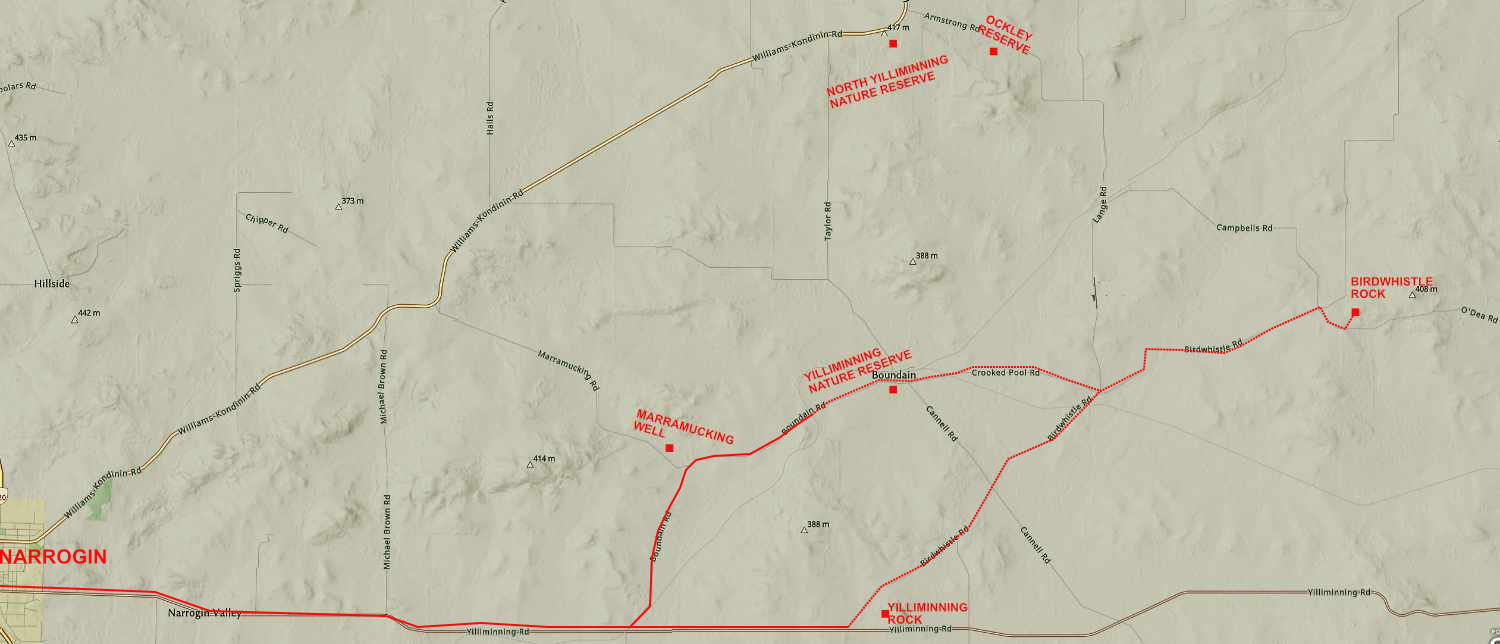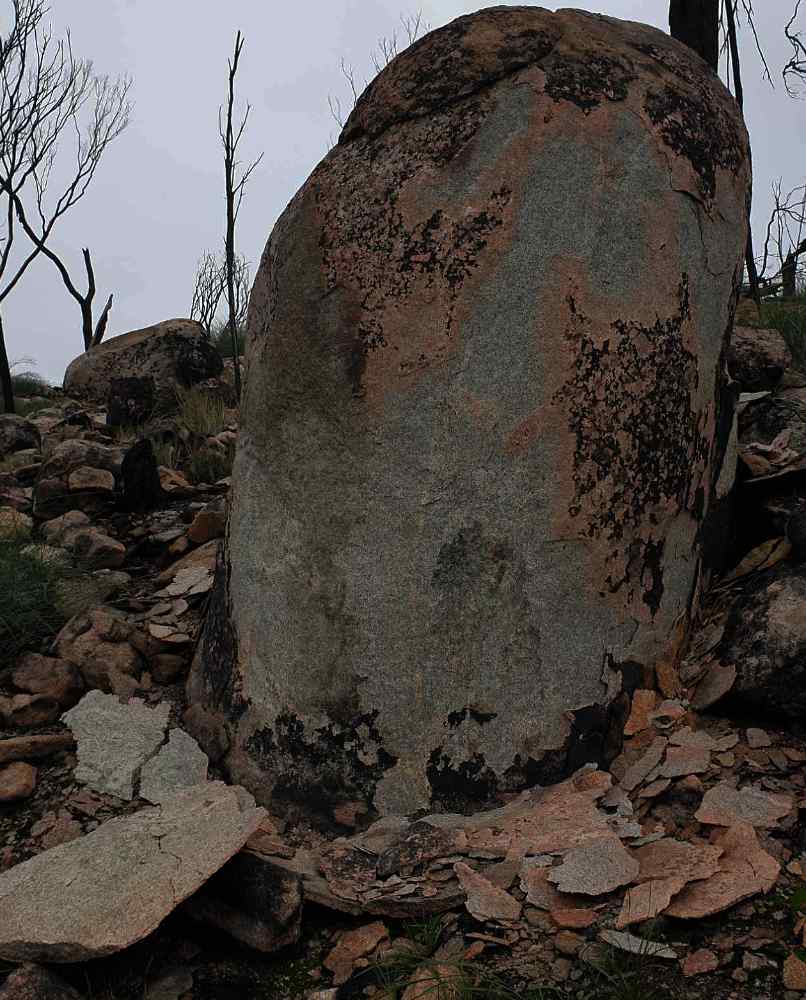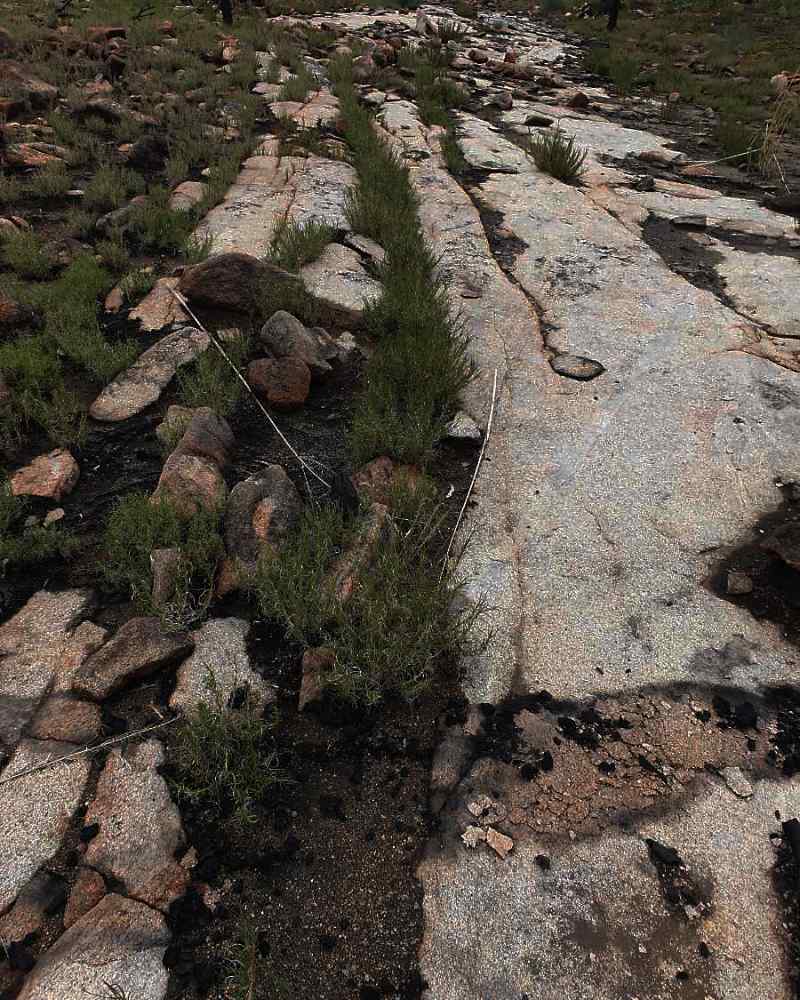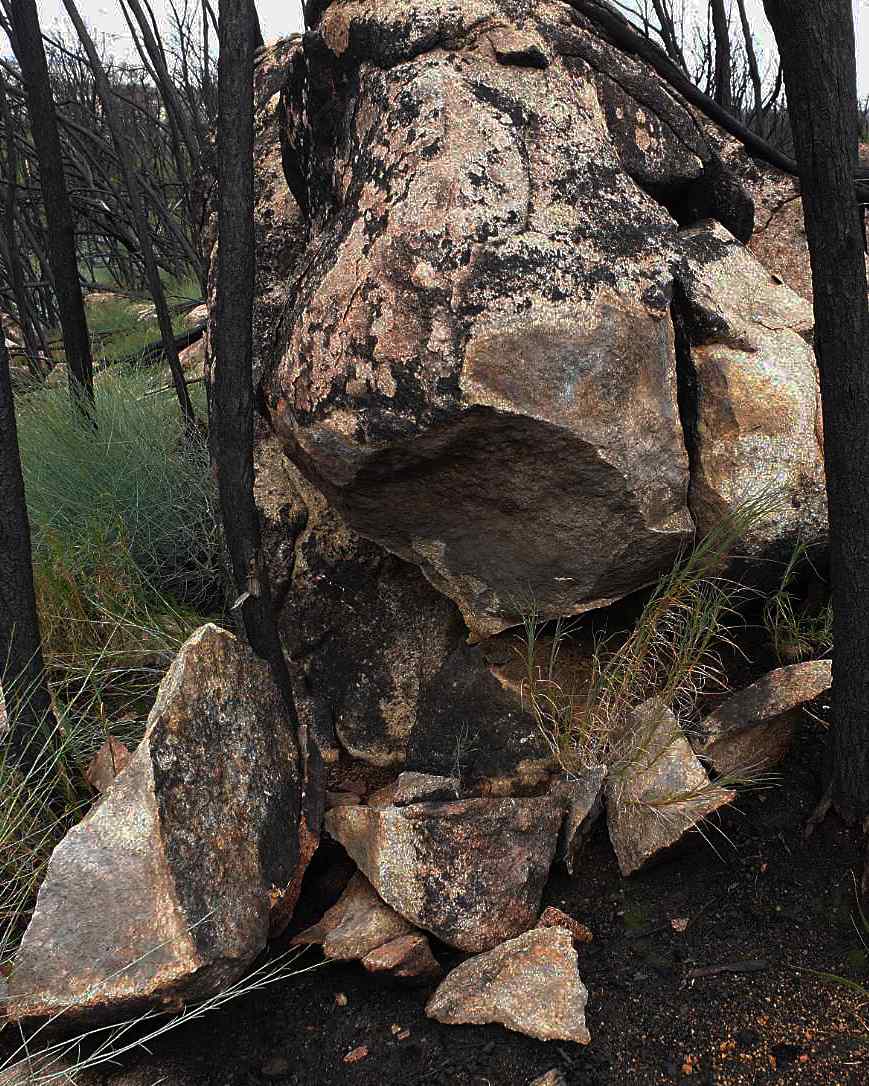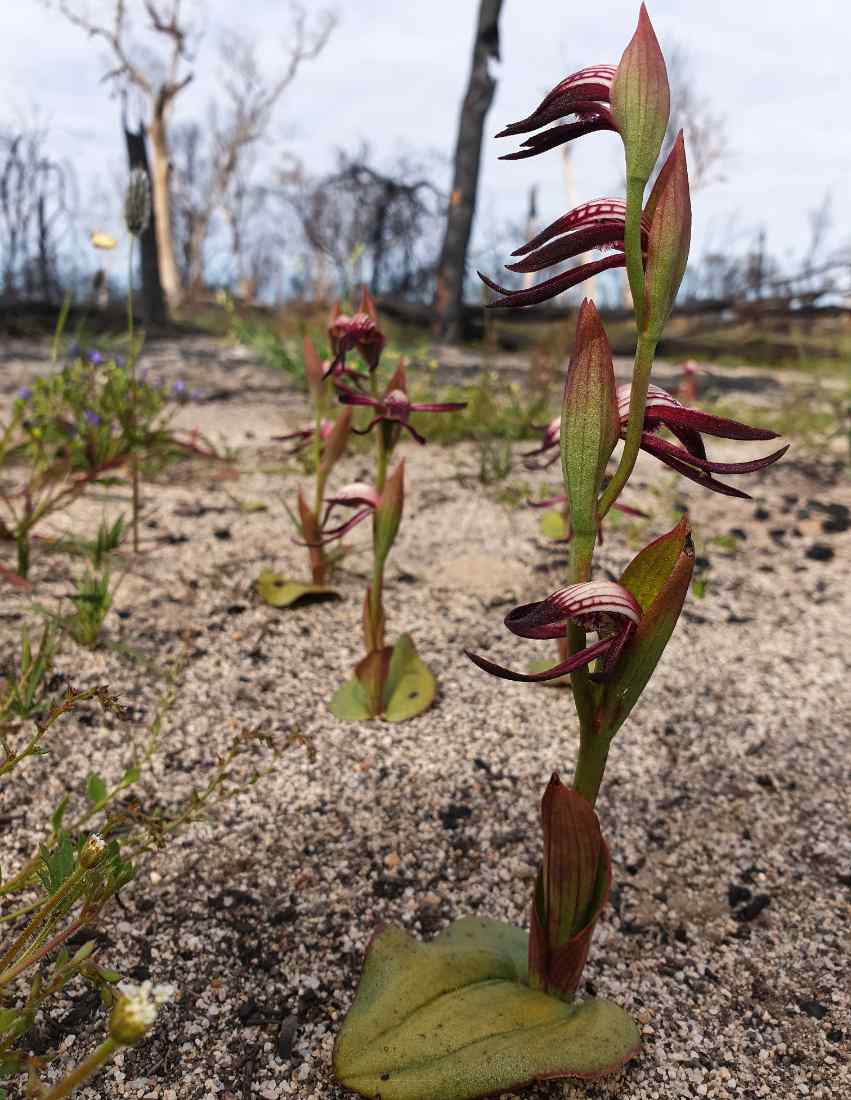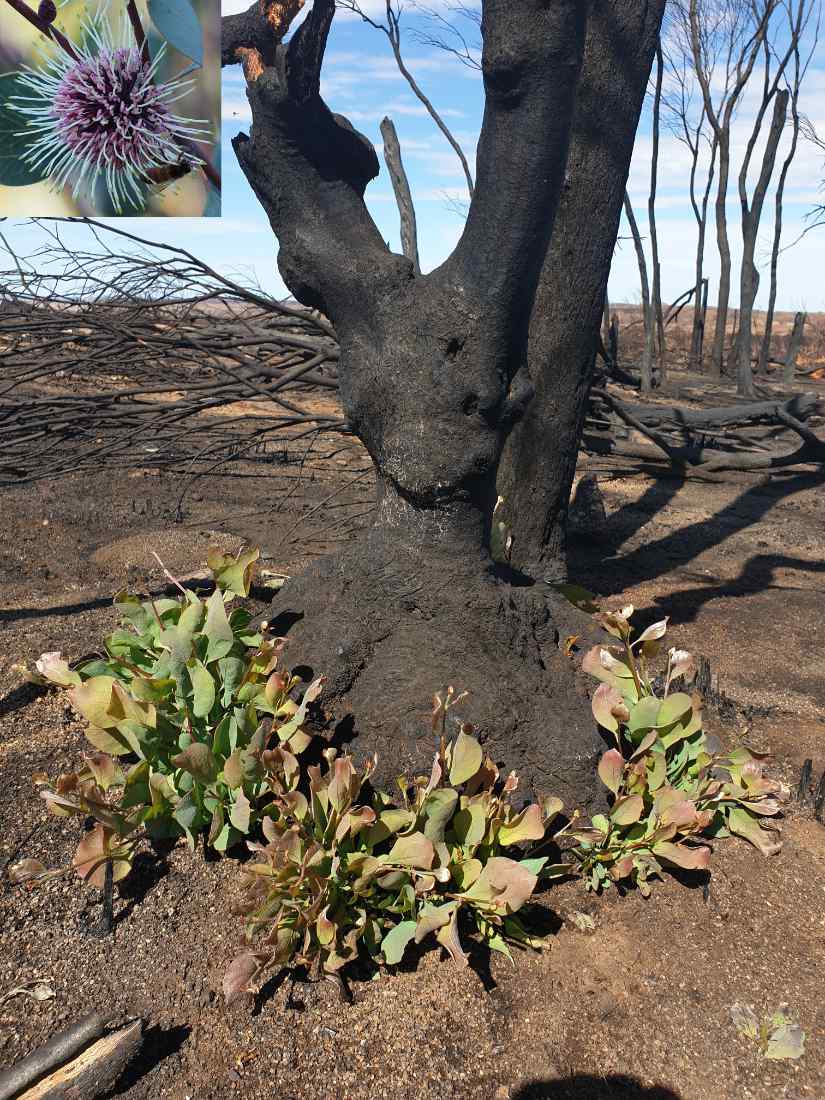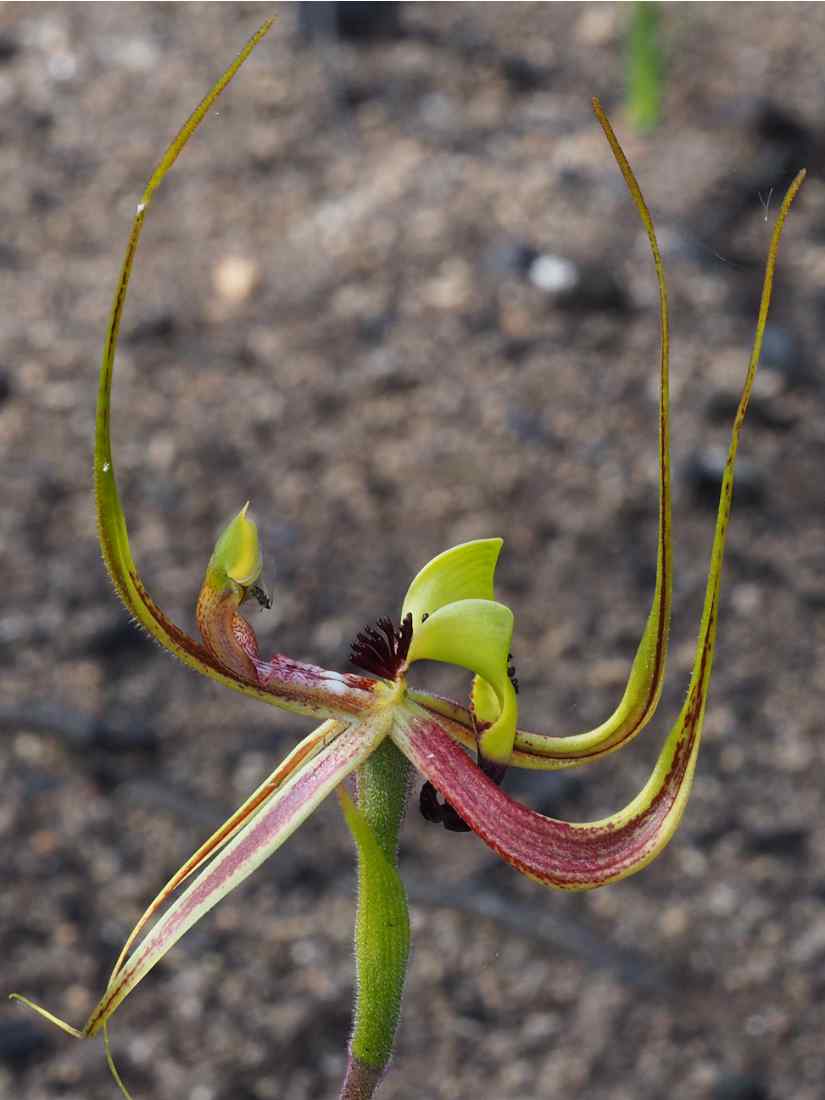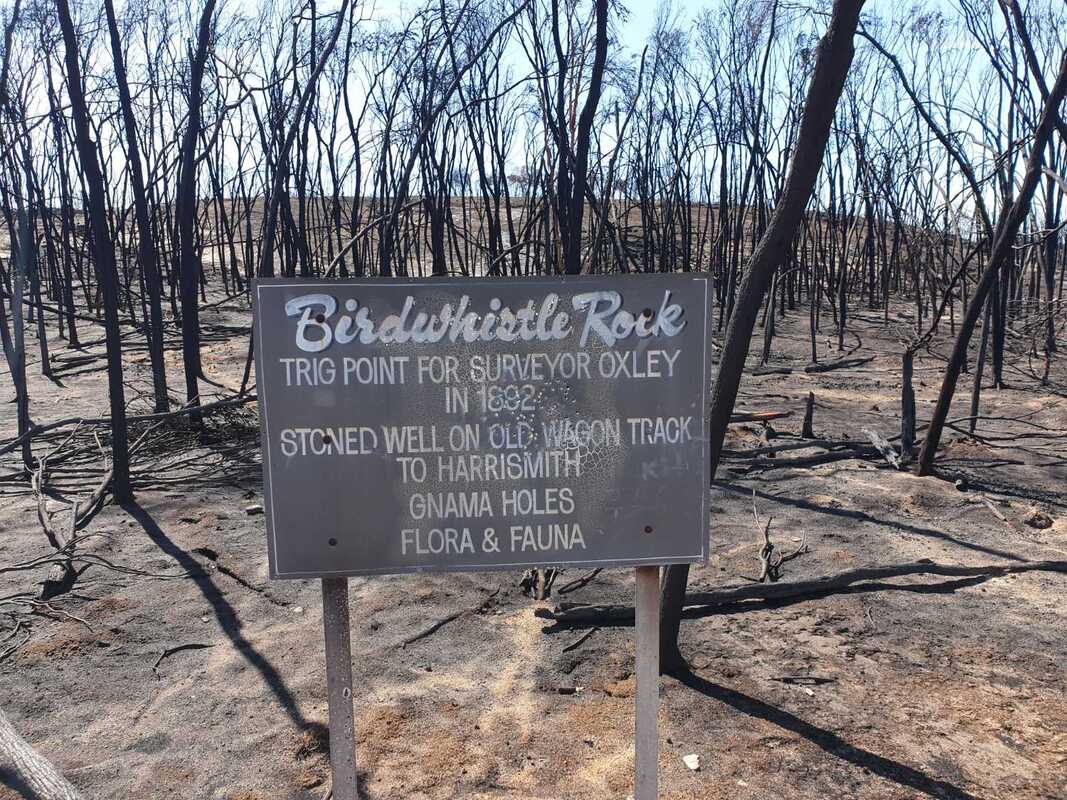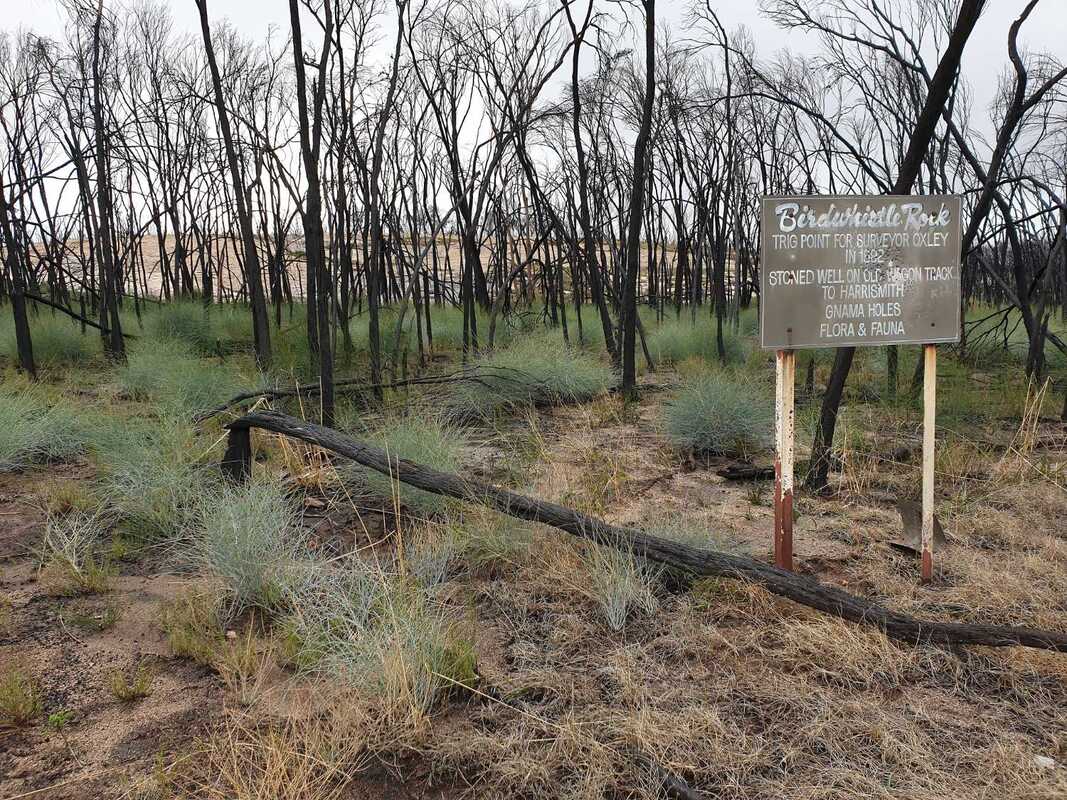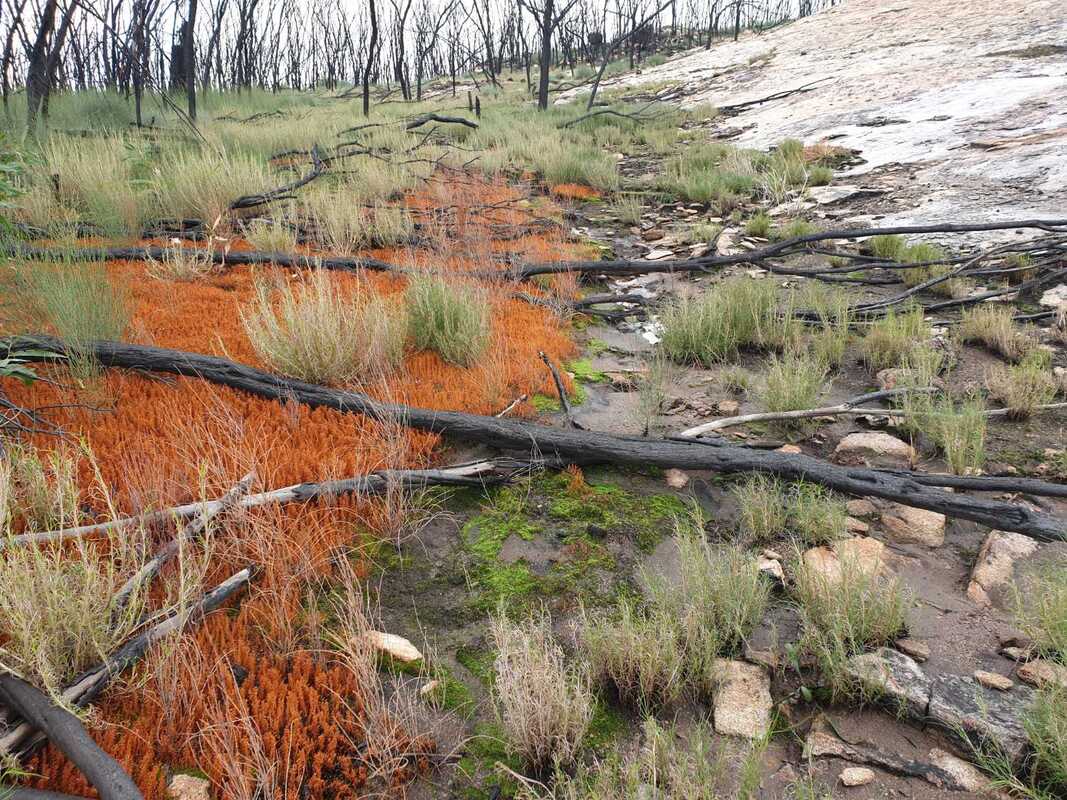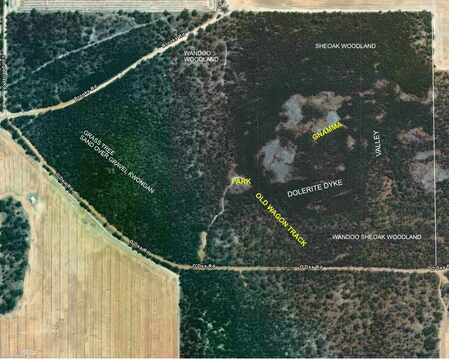 Dark green = sandy gravel
Dark green = sandy gravel There are no facilities.
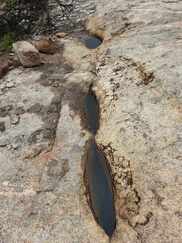 Gnamma holes in granite crack
Gnamma holes in granite crack A huge wildfire in February 2022 apparently destroyed all vegetation and wildlife. I have been able to witness how intense fire can split rocks and cause the equivalent of thousands of years of rock 'weathering' in a single event.
The rock is roughly an inverted U shape, with a central valley flowing south.
On the western side of the car park is a 40 ha triangle of grass tree kwongan.
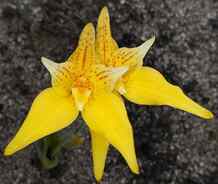 Caladenia flava October 2022
Caladenia flava October 2022 Some good news about the fire is that it was so intense that most wild oat seeds were incinerated, which gave native plant species a chance to reestablish.
There was little plant cover in 2022 apart from some fire colonising species, moss, limited tree / shrub regrowth, and some orchids. Caladenia flava, Caladenia integra, and lots of Pyrorchis nigricans.
